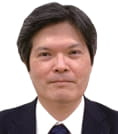- JST Home
- /
- Strategic Basic Research Programs
- /
 CREST
CREST- /
- Research Director/
- Development of technology platforms for quantitative analysis of spatiotemporal multicellular interaction/
- [Multicellular interaction] Year Started : 2020
[Multicellular interaction] Year Started : 2020
Hideki Enomoto
Gut-Brain functional connectomics toward understanding and application of the gut sensory system
Grant No.:JPMJCR2021
Research Director
Hideki Enomoto

Professor
Graduate School of Medicine
Kobe University
Collaborator
| Takeshi Imai | Professor Graduate School of Medical Sciences Kyushu University |
| Kazunari Miyamichi | Team Leader Center for Biosystems Dynamics Research RIKEN |
| Shigefumi Yokota | Associate Professor Faculty of Medicine Tottori University |
Outline
Sensory information of the gut luminal environment does not reach conscious perception yet plays a crucial role in the maintenance of body homeostasis. In this project, we will elucidate how gut sensory information is sensed, integrated and transmitted to the brain through anatomical and physiological quantitative analyses. We also seek to identify the visceral neural circuits that are activated by the gut sensory signals. Finally, by manipulating the activity of the gut sensory system, we aim to unveil the physiological significance of the gut-brain axis and to develop a novel strategy for regulating organ function via the gut sensory system.
Mutsuhiro Takekawa
Regulation of biological stress responses by molecular oscillations and multicellular interactions
Grant No.:JPMJCR2022
Research Director
Mutsuhiro Takekawa

Professor
Institute of Medical Science
The University of Tokyo
Collaborator
| Takashi Suzuki | Specially Appointed Professor (Full time) Center for Mathematical Modeling and Data Science The University of Osaka |
Outline
In dealing with environmental stresses, multicellular organisms have developed a strategy as to how damaged cells will respond to stresses. In general, if the intensity of the damage is moderate, the cell will seek to repair the damage. If, however, the damage to a cell is too severe to be repaired, the affected cells are eliminated by apoptosis. Thus, eukaryotic cells convert a graded stress stimulus into a switch-like or binary response, but the underlying mechanisms remain unclear. In this project, we will elucidate the regulatory mechanisms of biological stress responses from perspectives of multicellular interactions and intracellular oscillations of signaling molecules, and develop a new strategy to overcome human diseases associated with dysregulation of biological stress responses.
Fumiko Toyoshima
Elucidation and operation of physiological organ remodeling
Grant No.:JPMJCR2023
Research Director
Fumiko Toyoshima

Professor
Institute of Integrated Research
Institute of Science Tokyo
Collaborator
| Mitsuhiro Iwaki | Visiting Researcher RIKEN Center for Biosystems Dynamics Research RIKEN |
| Koichiro Maki | Associate Professor Institute for Life and Medical Sciences Kyoto University |
| Takuya Yamamoto | Professor Center for iPS Cell Research and Application Kyoto University |
| Mitsuhiro Iwaki | Senior Researcher Advanced ICT Research Institute National Institute of Information and Communications Technology |
Outline
Organs and tissues alter their size and functions to adapt to physiological changes of the body. In skin, mechanical stretch induces tissue expansion via epidermal/dermal remodeling. This project aims to elucidate the mechano-induced skin tissue remodeling by developing an in situ force/gene expression-measuring method. The second aim is to establish the tissue-manipulation method that recapitulates physiological skin remodeling, and its application for regenerative medicine.
Motohiro Nishida
Organization of rubust muscles by developing the basis of supersulfide flux analyses
Grant No.:JPMJCR2024
Research Director
Motohiro Nishida

Professor
Graduate School of Pharmaceutical Sciences
Kyushu University
Collaborator
| Takaaki Akaike | Professor Graduate School of Medicine Tohoku University |
| Takakazu Nakabayashi | Professor Graduate School of Pharmaceutical Sciences Tohoku University |
| Akiyuki Nishimura | Project Associate Professor National Institute for Physiological Sciences (Exploratory Research Center on Life and Living Systems) National Institutes of Natural Sciences |
Outline
The electron-driven (redox) force of cells plays an extremely important role in energy metabolism and membrane potential formation. In this study, we aim to elucidate the mechanism for building robust mature muscle tissue, by focusing on heterologous cell-cell communications of supersulfides as molecular entities that are the easiest to transfer electrons among life elements and reflect the redox power of individual cells. We wll develop several quantitative techniques to visualize supersulfide-dependent multicellular interactions, and these approaches will establish the physiological and clinical importance of supersulfides in mammals.
Yoshihiro Morishita
Elucidation of morphogenetic laws conserved between species and organs based on quantitative analysis of tissue deformation dynamics
Grant No.:JPMJCR2025
Research Director
Yoshihiro Morishita

Team Director
Center for Biosystems Dynamics Research
RIKEN
Collaborator
| Kenichi Suzuki | Specially appointed Associate Professor National Institute for Basic Biology National Institutes of Natural Sciences |
Outline
To advance our understanding of organ morphogenesis as a physical process, we will address the following issues. (1) We will develop a new mathematical method that integrates spatio-temporal transcriptome information and tissue dynamics, and apply the method to real biological data to verify its usefulness. (2) We will also apply the developed method to various animal models to elucidate the morphogenetic laws that are conserved among species and organs.













